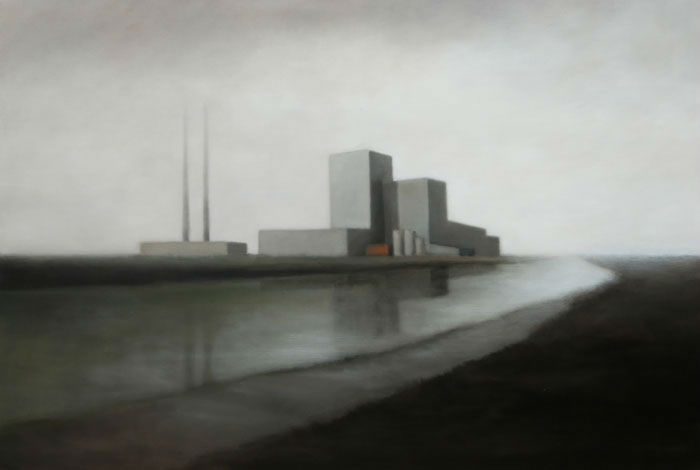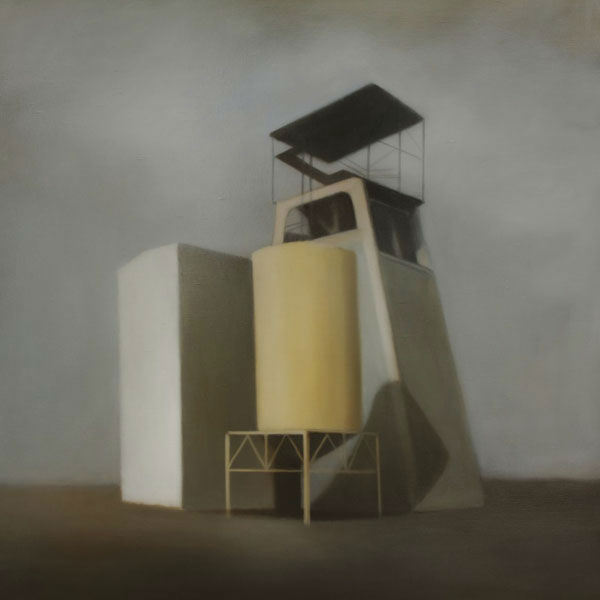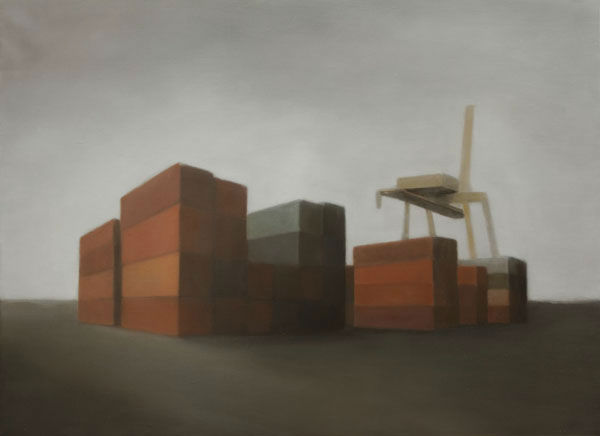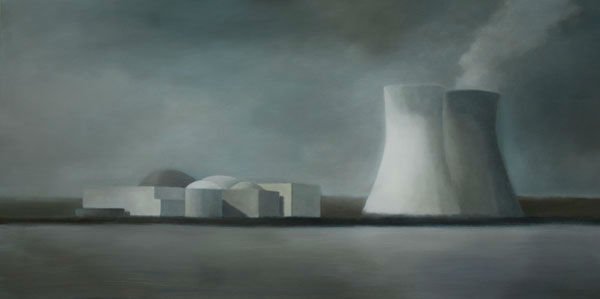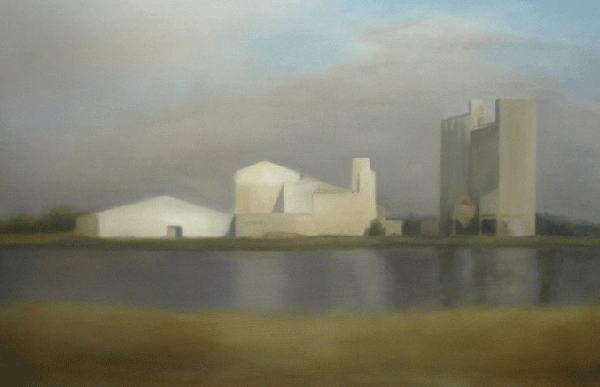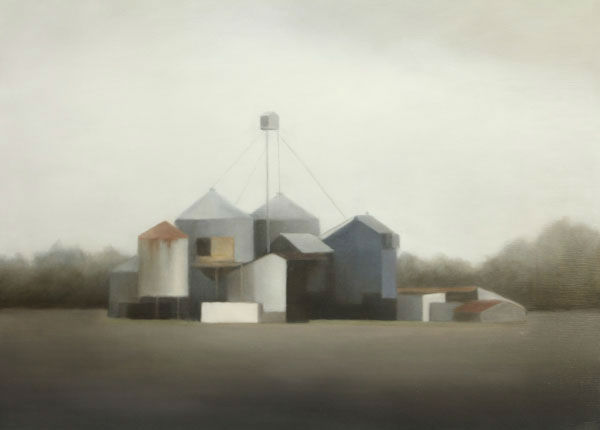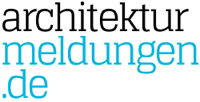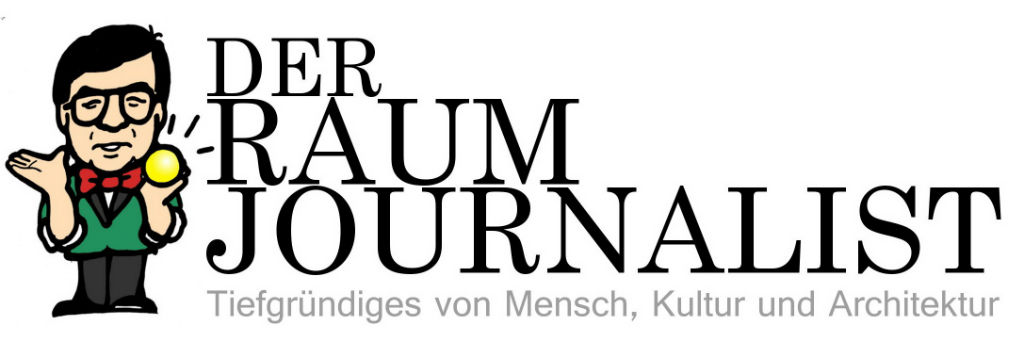„I want my paintings to be like open doors that invite to travel.“ INTERVIEW with Marion Tivital
French artist Marion Tivital paints the „remains“ of industrial development in landscapes, all the factories, warehouses, silos that literally „took place“ in the surroundings and became part of landscapes such as huts and fences, fields and pathways. In Tivital’s works, painted in a reduced style with minimalistic forms and muted colours, these structures develop an intriguing, almost meditative quality – a reference to her introspective approach:
She tries to capture and re-create emotions and sensations, memories and thoughts which she encounters when outdoors. Furthermore it is the relationship between light and shadow which she is exploring tirelessly. She says: „I appreciate the poetry of the commonplace, the motionless and the invisible. I am interested in what stands humbly in the shadows, what we do not notice. The topics that inspire me are evident in the world where you live, but you don’t notice them anymore. I love taking the time to contemplate and discover their hidden beauty.“
Even though Tivital has been painting for 25 years, inspired by artist and teacher Patrice de Pracontal, it was only after 2007 that she started to exhibit her work – noticing to her great surprise and joy that her artistic research is indeed interesting to others: „Car je n’osais imaginer que mes recherches artistiques puisse interesser d autres personnes que moi… Car le regard des autres, que je ne connaissais pas, a Ă©tĂ© une tres belle dĂ©couverte pour moi.“
Her works are on permanent display at GNG Gallery, Paris, Françoise Souchaud Gallery, Lyon, Galerie Picot-Le Roy, Morgat (F), Galerie St Rémy, Liege (BE), and Jack Fisher Gallery, San Francisco. Current solo shows can be seen at Fert Gallery, Yvoire, France, (07.06.-07.09.2013), at Yes Art Gallery, Sint-Idesbald, Belgium, (19.09.-27.10.2013), and in Paris, GNG Gallery (05.12.-10.01.2014)
In interview with deconarch.com, Marion Tivital describes why industrial landscapes have such an appeal to her, how she tries to capture the essence of her motives and explains her working process.
 all illus. (c) Marion Tivital, www.mariontivital.com
INTERVIEW
Your paintings show industrial sites, factories, warehouses, silos. Why are you interested in these architectural forms?
I want to study the relationship between these geometric shapes and their environment, the slow and inexorable integration of these masses into the landscape. Being witnesses of a glorious past of the working world, they exude a melancholy that speaks to me of absence.
I am fascinated by the power, the calm energy of these forms, the almost abstract quality of their structures. I want to give these landscapes another place than that of insignificant decor because they are presences that will outlive us.
And why industrial landscapes in particular?
Personally, I find beauty in these silos and warehouses. They catch the light beautifully, plastically, it’s almost Land Art. They interact with the surrounding vegetation, they fit into the landscape, it is all quite mysterious. Nobody really pays attention to them, but everyone knows and recognizes them in my paintings. They are universal. Basically, these landscapes and still lifes are universal – we all know them, even without paying attention to them. People often tell me, when looking at my works, that I paint ugly places, but after a while they are reminded of a factory they used to pass by when they were children. I think that the fact that anyone can recognize the warehouse that was close to one’s house or on the road to one’s parent’s house is very touching.
I actually started with painting landscapes. Landscapes refer to ourselves, they are places where I can daydream, where I like walking around aimlessly. And above all, I love to paint the light coat of light that dresses volumes. And in our landscapes, which beautifully capture the light, there are warehouses, silos, geometric masses of plants … I want to find beauty where one doesn’t expect to find it.
Even though the industrial sites refer to a rather extreme human presence, there are no humans in your paintings …
Moreover, these constructions, as well as plastic containers in which I work, carry a story in which man belongs. I am often told, that even though man is absent from my paintings, I am still not showing the virgin nature but things man thought of, made, used. In the case of plants, they are places where the man works or has worked. So I found that the industrial sites were carrying more than empty landscapes.
Through these built landscapes and these plastics, I track down humanity through the traces it leaves. Because human achievements basically seem to talk about what they are. Why did man plant warehouses into nature, build factories like cathedrals or create such beautiful bottles of bleach? These are questions that interest me.
Time has passed on these things, they have been used and then they have been more or less discarded. They now have a history; they have become something different than what the engineer had designed. Moreover, plastic bottles shapes echo each other and create these unpredictable harmonies. I try to discover hidden beauties. When beauty is obvious, you can only damage it.
Why paint these motives, why not photographing them?
Painting is my only medium. It gives me a freedom of interpretation that would be much harder to achieve with photography. This way I can create a close personal interpreation of my feelings with my own hands, at my own pace – an interpretation sometimes far from objective reality. In addition I enjoy painting with oil, the feeling of the brush slide over the canvas or wood. Making my medium, my varnish, some of my colors, that is also also part of the process. Making the strokes, leaving a personal record of my hand, that is a pleasure photography does not offer. Work the key, leave a personal record of my hand is also a pleasure n not offer. The manual, human, artist side of painting corresponds very well to my introspective approach.
Your sceneries – both the industrial landscapes and the industrial designs, another important series of yours – show a very reduced style, muted colours, minimalistic forms. You mention your introspective approach – what are you interested in? What’s the focus of your work?
I want to recreate my feelings in the paintings. This is a long and obstinate quest. I just want to capture the essence of my subject, capturing what I feel in front of it. I would like to show what makes beauty and unity, the harmony that emerges, the balance of contrast ratios, the beauty of the light coat that covers it. For me, one of the most sensual pleasures of painting is just that, just painting a cubic front in the shadow, another one in light. I do not get tired of it. It is this relationship between light and shadow I am trying to explore.
I’m working in simplifying. This leaves room for interpretation. Not only mine, but also that of the person looking on the painting. I avoid the anecdotal and the unnecessary. For me, this simplification is one of the ways that allow me to transcribe accurately what I see.
When I paint, I like doing things at my own pace. We live in a frantic world, everybody is chasing things at full speed, whether words or images. Painting an object or a landscape gives me the feeling of being suspended in time, quiet, in a world that belongs to me.
I want my paintings to be like open doors that invite to travel.
Perhaps my work is a reflection about the distanciation going on in the “real” world …
Where do you find your motives?
I appreciate the poetry of the commonplace, the motionless and the invisible. I am interested in what stands humbly in the shadows, what we do not notice. The topics that inspire me are evident in the world where you live, but you don’t notice them anymore. I love taking the time to contemplate and discover their hidden beauty.
How is your working process?
I usually work with several photos of places that I have come across. I try to recreate the feelings I had there, in some way to “digest“ them. This process takes quite long. I work day after day on a painting, applying layers over layers. For my objects, I work in front of my „models“ to feel their presence.
I try to put myself in a state of uncertainty, to clear my head, to absorb these sensations happening. Finding this moment of grace where the distance between me and my subject no longer exists.
Technically, I paint with oil. I try to paint a bright white, as I make my own white, mixing white emulsion with pigments and oil (as did the Dutch painters). This way I can create the light I want to evoke …
Which light is that?
To me, light is the light of French Brittany where I’m from or in general the light of the North. These ever-changing lights mysteriously piercing through the clouds have left a mark on me.
Jean-Daniel Mohier mentioned the similarities of your works to Morandi. Is he an influence to your work? And are there other inspirations?
Indeed, I admire great masters like Vermeer, Rothko and especially Morandi. The later in particular – I admire everything about him, his simplicity, his asceticism, his relentless work and the depth of it, as well as his inner quest and the spirituality he gives to it. The power of his drawing skills are an example for me. The sobriety and the poetry of his work touch me deeply. If one looks at the drawings Morandi was making at the end of his life, there is almost nothing there, a few lines to give contrast and that’s it.
One of the other great „artistic shocks“ of my life happened when I visited the Tate Modern, the Rothko room – like a chapel with six red canvases he finished just before his death. Together with the Rothko chapel in Houston, this is my favourite place, spaces of meditation and great emotions.
What are you currently working on?
Some plastics, some landscapes with constructions – diving platforms, gas stations, a container in a forest …
 Chère Marion, merci beaucoup de partager tes idées et ton travail avec nous!

